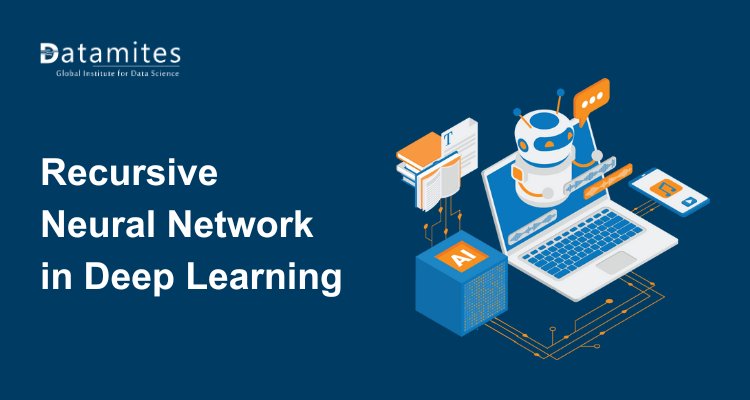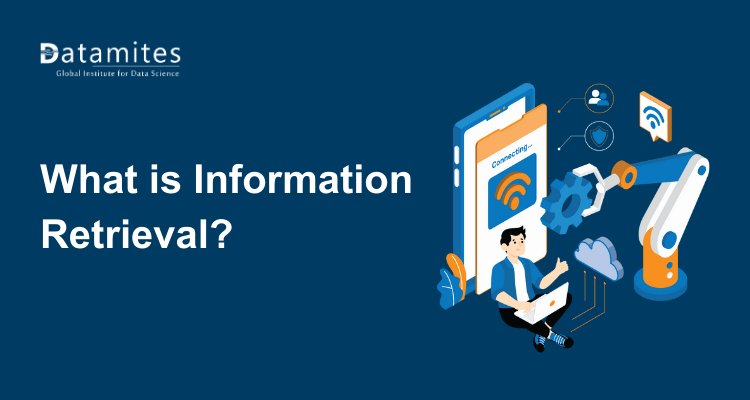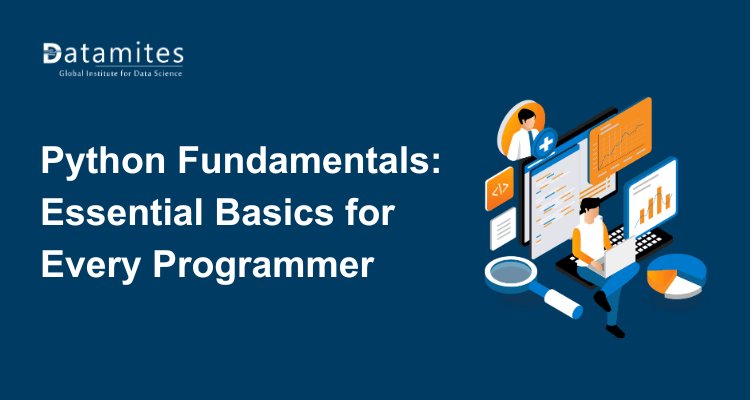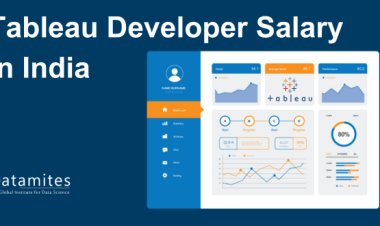Data Preparation for Data Analysis
Explore the world of cloud-based data analytics, its benefits, challenges, and real-world applications across industries like retail, healthcare, finance, and manufacturing to drive smarter, data-driven business decisions.
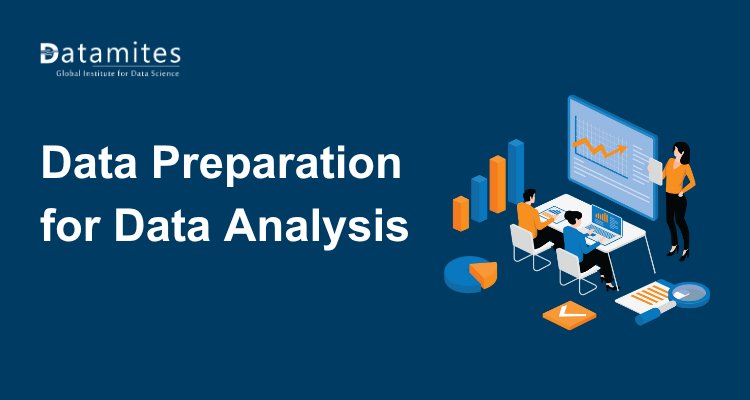
In today’s data-driven business world, the ability to extract meaningful insights from data is a competitive advantage. However, before analysts can generate impactful reports or create predictive models, there’s a crucial step that must be completed in data preparation. Often underestimated, this process is the backbone of effective analytics, ensuring that the datasets used are accurate, consistent, and ready for advanced data analysis tools.
Whether you’re a beginner exploring the basics of data preparation and analysis or a seasoned professional looking to optimize workflows, mastering data preparation can significantly improve the quality of your insights. This guide covers everything you need to know about the process, its importance, tools, and real-world applications.
What is data preparation?
Data preparation is the process of cleaning, structuring, and organizing raw data to convert it into a well-formatted, analysis-ready form. It involves collecting data from various sources, removing inconsistencies, and transforming it into a usable form for data analysis tools like Tableau, Power BI, or Python-based libraries.
At its core, data preparation and analysis aim to ensure that data is not only accurate but also structured to deliver meaningful results. Without proper preparation, even the most advanced analytical models can produce misleading or incomplete outcomes.
Importance of data preparation in data analysis
Many organizations overlook the importance of data preparation and proceed straight to the analytics stage. This is where mistakes happen. According to industry research, up to 80% of a data analyst’s time is spent preparing data before actual analysis begins. This highlights its importance in ensuring accurate, actionable insights.
1. Accuracy of results: Well-prepared data ensures that the findings from your data preparation and analysis are accurate and reliable. Inaccurate data leads to misleading conclusions, which can harm a business.
2. Efficiency in analysis: Organizing and cleaning data in advance allows data analysis tools to operate more efficiently, saving valuable time during data analysis projects.
3. Better decision-making: Decision-makers rely on the output of data analysis. Properly prepared data provides clarity, reduces uncertainty, and increases confidence in decisions.
4. Compliance and data governance: In many industries such as finance, healthcare, and e-commerce data must adhere to strict compliance standards. Data preparation ensures datasets meet these regulatory requirements.
For anyone pursuing a data analyst career by opting top IT Courses in demand, mastering data preparation is not just a technical skill, it's an industry expectation. Let’s move towards the key data preparation process for data analysis.
Refer to the articles below:
- Introduction to ETL in Data Analytics
- Applying Data Analytics to Finance
- Top statistical tools for data analysis
Key steps in the data preparation process
The data preparation process follows a systematic approach to ensure datasets are accurate, consistent, and relevant. According to Statista, retailers utilizing AI and machine learning analytics in their operations experience a significant 5–6% boost in both sales and profit growth compared to those that do not adopt these advanced technologies. The data preparation process has been mentioned below:
1. Data collection: Gather data from various sources such as databases, APIs, spreadsheets, or cloud platforms. For data analyst projects, this could involve both internal and external data sources.
2. Data cleaning: Remove duplicate entries, handle missing values, and correct formatting errors. This is one of the most critical tasks for anyone in a data analyst job.
3. Data transformation: Convert data into a consistent format, such as normalizing date and time formats, changing units of measurement, or encoding categorical variables for machine learning models.
4. Data integration: Combine data from multiple sources into a unified dataset for seamless analysis. This step is especially important when working on large-scale data analyst projects.
5. Data reduction: Remove unnecessary fields or compress large datasets to improve processing speed without losing valuable information. This makes processing faster without losing essential detail
6. Data validation: Verify that the prepared dataset meets quality standards and is ready for data analysis tools to process for data preparation. A data analyst career demands precision, and following these steps ensures the integrity of every data analyst project.
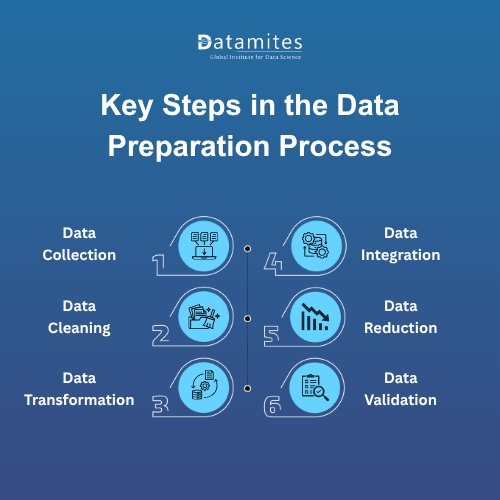
By following these steps and using popular tools for data preparation, businesses can ensure smooth and accurate data preparation and data analysis.
Popular tools for data preparation
The growing demand for efficient data preparation and analysis has led to the rise of several tools that automate and simplify the process. These data analysis tools range from beginner-friendly platforms to advanced programming frameworks.
- Excel and google sheets: Ideal for small to medium datasets, these tools provide essential features such as sorting, filtering, and conditional formatting for data preparation and analysis. They are especially useful for entry-level data analyst projects and quick data cleaning tasks.
- Power BI: A versatile platform that combines data preparation with dynamic data visualization, allowing professionals to connect multiple data sources effortlessly. Its user-friendly drag-and-drop interface makes it a preferred tool for creating dashboards, enhancing a data analyst’s career prospects.
- Tableau: Known for its visual approach, Tableau Prep enables analysts to clean, shape, and merge datasets with ease. This tool helps speed up the data preparation process before transferring data into Tableau for deeper analysis, benefiting complex data analyst projects.
- Python and R: For advanced users, these programming languages offer libraries like Pandas, NumPy, and dplyr that provide unparalleled flexibility in handling massive datasets. They are widely used in data analyst jobs requiring automation, predictive analytics, and statistical modeling.
- Talend and Alteryx: These enterprise-grade platforms streamline the data preparation workflow by automating repetitive tasks such as data extraction, transformation, and loading. Often favored by large organizations, they help optimize time for data analysts working on high-volume, cross-industry datasets.
A skilled data analyst often uses a combination of these tools, depending on project requirements and the complexity of the dataset. Data Preparation tools have various applications in different industries to streamline the data preparation process.
Refer to the articles below:
- How to Become A Data Analyst – Best Certification Courses in India
- How much is the Data Analytics course fee in India
- Mastering Data Analytics in India
Role of data preparation across various industries
The relevance of data preparation extends across multiple industries, forming the backbone of effective data analytics strategies. According to MarketsandMarkets, the global retail analytics market is projected to expand from USD 8.5 billion in 2023 to USD 22.1 billion by 2028. Here are some key industrial applications:
- Data preparation in retail and E-commerce: In data analytics in retail, clean and structured data enables accurate sales forecasting, personalized marketing campaigns, and customer behavior prediction. E-commerce platforms rely heavily on prepared datasets to optimize inventory, pricing, and customer recommendations.
- Data preparation in healthcare analytics: In data analytics in healthcare, properly prepared medical datasets allow for early disease detection, improved patient outcomes, and resource optimization. Hospitals and research institutions use well-prepared data for predictive modeling and public health decision-making.
- Data preparation in banking and finance: Data anlaytics in banking and data analytics in finance require highly accurate datasets for fraud detection, credit scoring, and compliance reporting. Prepared data also supports investment risk analysis and helps financial institutions meet regulatory requirements.
- Data preparation in manufacturing: In data analytics in manufacturing, well-prepared production and quality control data enable predictive maintenance, process optimization, and waste reduction. Manufacturing companies use clean datasets to enhance operational efficiency and reduce downtime.
While it may not be as glamorous as building predictive models or creating interactive dashboards, data preparation is the most crucial stage in the entire data preparation and analysis process. Without it, even the most advanced data analysis tools cannot produce meaningful results. And so the challenges that can be tackled in data preparation are listed below.
Challenges in data preparation
While data preparation is a crucial step in analytics, it comes with several challenges that can impact the quality of data, accuracy, and reliability of insights.
- Dealing with incomplete or missing data: A common challenge in data preparation is handling incomplete datasets, where missing values can lead to inaccurate insights.
- Data inconsistency and formatting issues: Inconsistent data formats such as varied date styles, currency units, or naming conventions can disrupt the data analytics process. Standardizing and normalizing data is crucial to ensure accuracy and comparability across datasets.
- Managing large and complex datasets: With the rise of big data, datasets often contain millions of records from multiple sources. Preparing such large-scale data for analysis requires advanced tools, data engineering skills, and efficient storage solutions.
- Identifying and removing duplicate data: Identifying and eliminating duplicate data is essential to ensure accurate analysis and reliable insights. Duplicate records can distort results and lead to misguided business decisions, making their removal a vital step in preserving dataset integrity during the preparation process.
- Ensuring data accuracy and reliability: Data preparation must include rigorous validation to ensure the accuracy and reliability of information. This involves cross-checking data against trusted sources and applying quality checks before it’s ready for analysis.
By understanding these challenges early, professionals can adopt effective strategies to streamline the data preparation process and ensure dependable analysis results.
Pursuing an offline Data Analyst course in Hyderabad or other prominent cities such as Pune, Chennai, Bangalore, Mumbai, Coimbatore, Ahmedabad, and Delhi equips aspiring professionals with essential industry exposure, practical experience, and a strong foundation for a rewarding career in data analytics.
Refer to the articles below:
- Data Analyst Course Fee in Hyderabad
- Data Analyst Course Fee in Chennai
- Data Analyst Course Fee in Bangalore
DataMites Institute stands out as a premier training provider in India, offering in-depth, expert-led programs in Data Analytics, Data Science, Machine Learning, Artificial Intelligence, Python, IoT, and Data Engineering. Its industry-relevant curriculum includes hands-on projects, certified internships, placement support, and globally recognized certifications accredited by IABAC and NASSCOM FutureSkills.
With both online and offline learning options, DataMites empowers learners with future-ready skills to excel in the competitive job market. The institute has a wide presence, offering Data Analyst courses Bangalore in cities like Pune, Hyderabad, Ahmedabad, Chennai, Coimbatore, Mumbai, Delhi, Jaipur, Kochi, and Kolkata.

